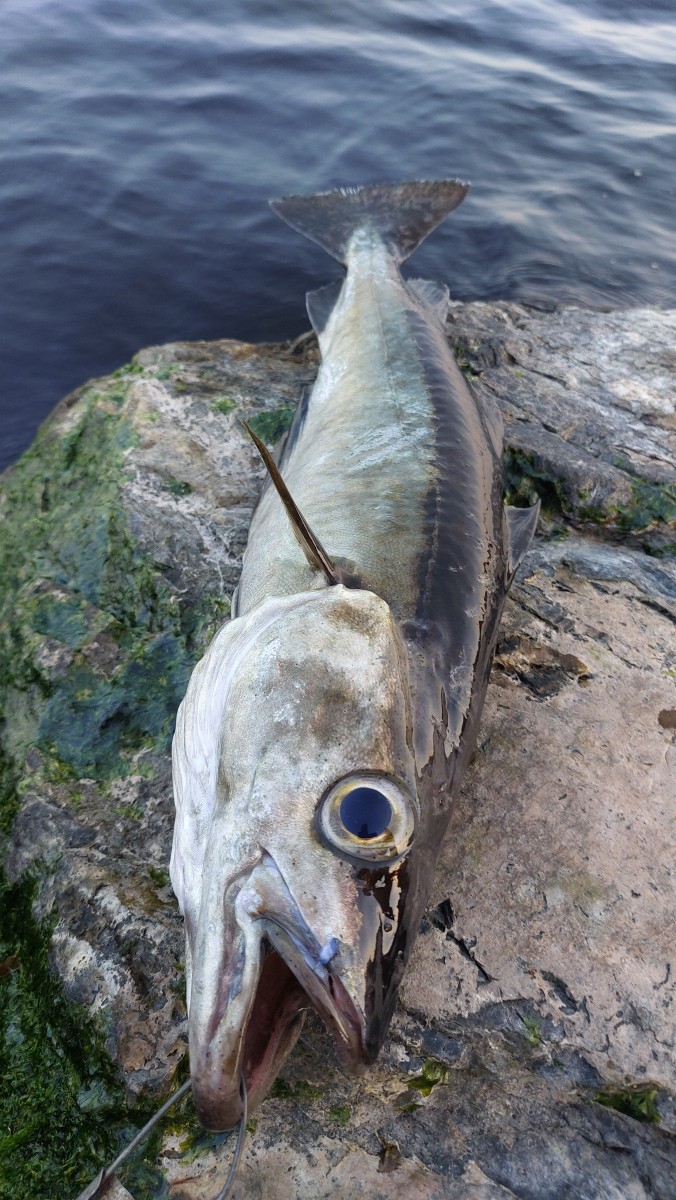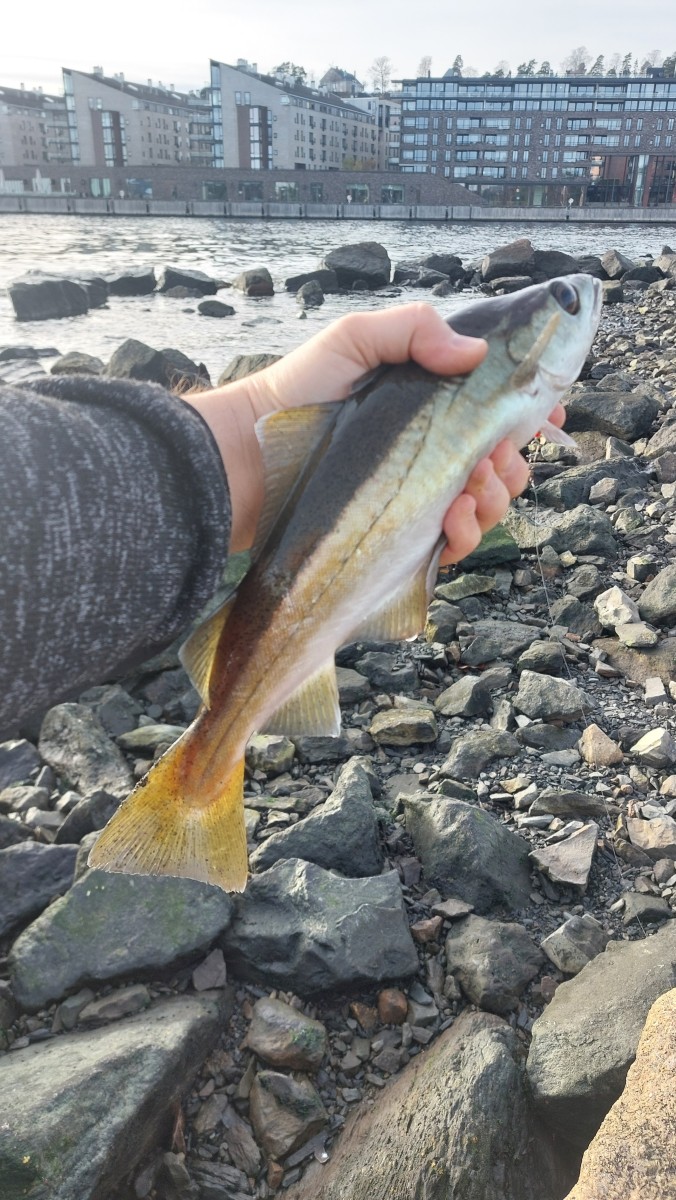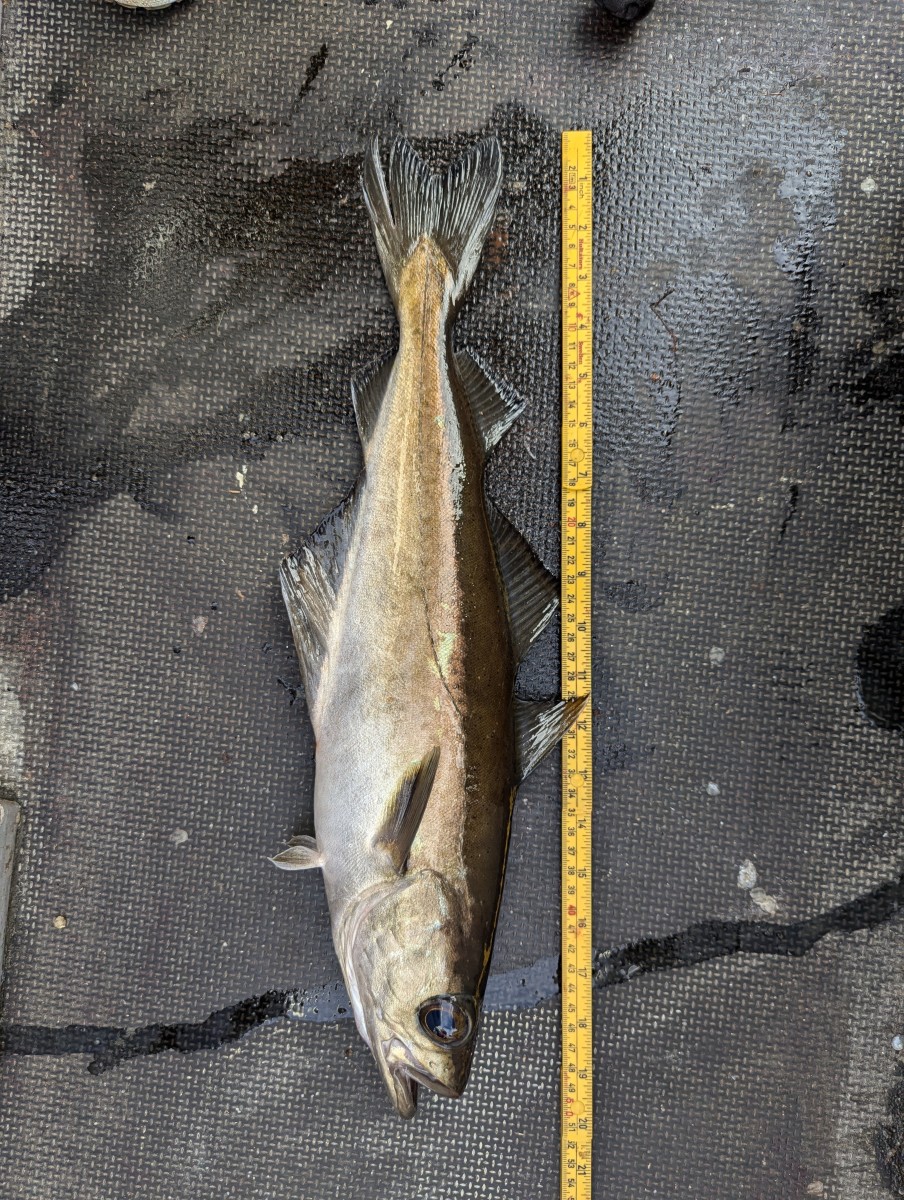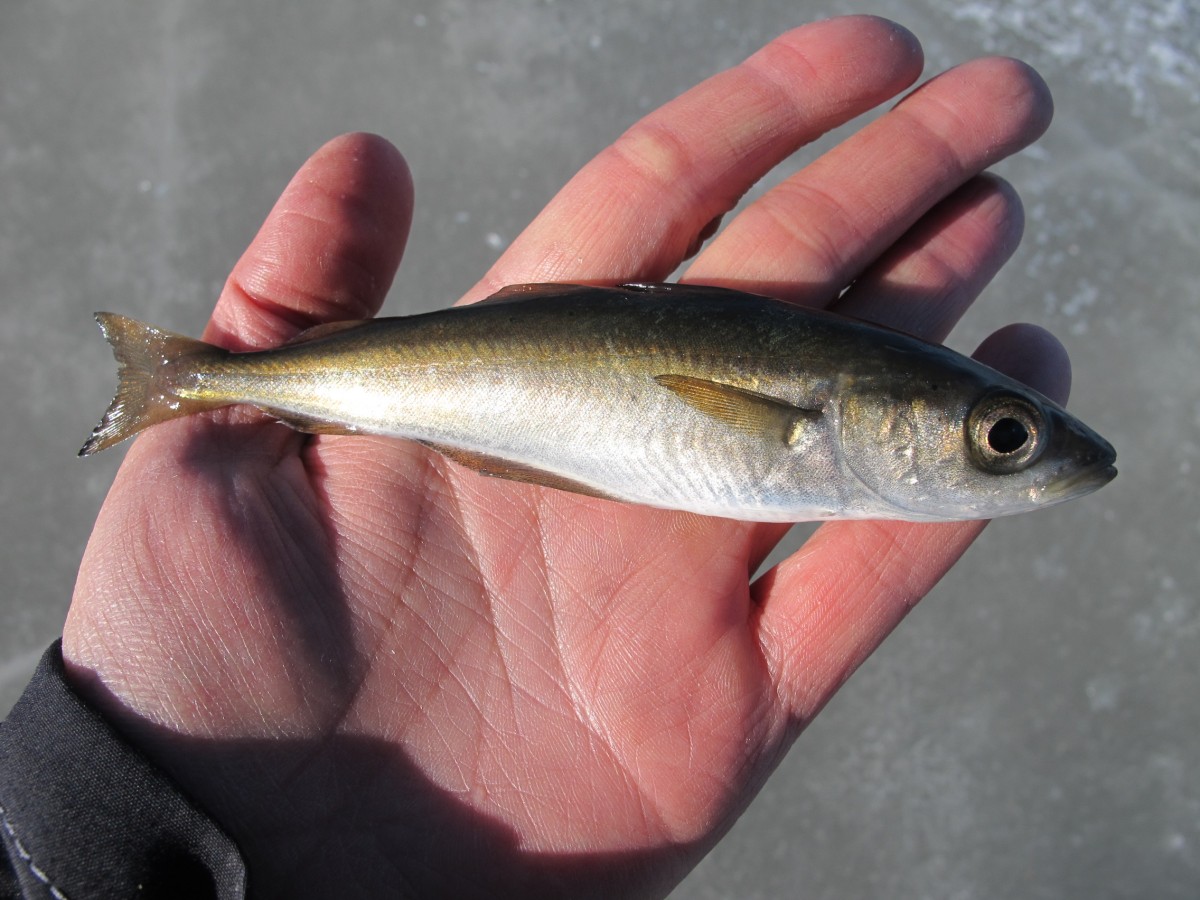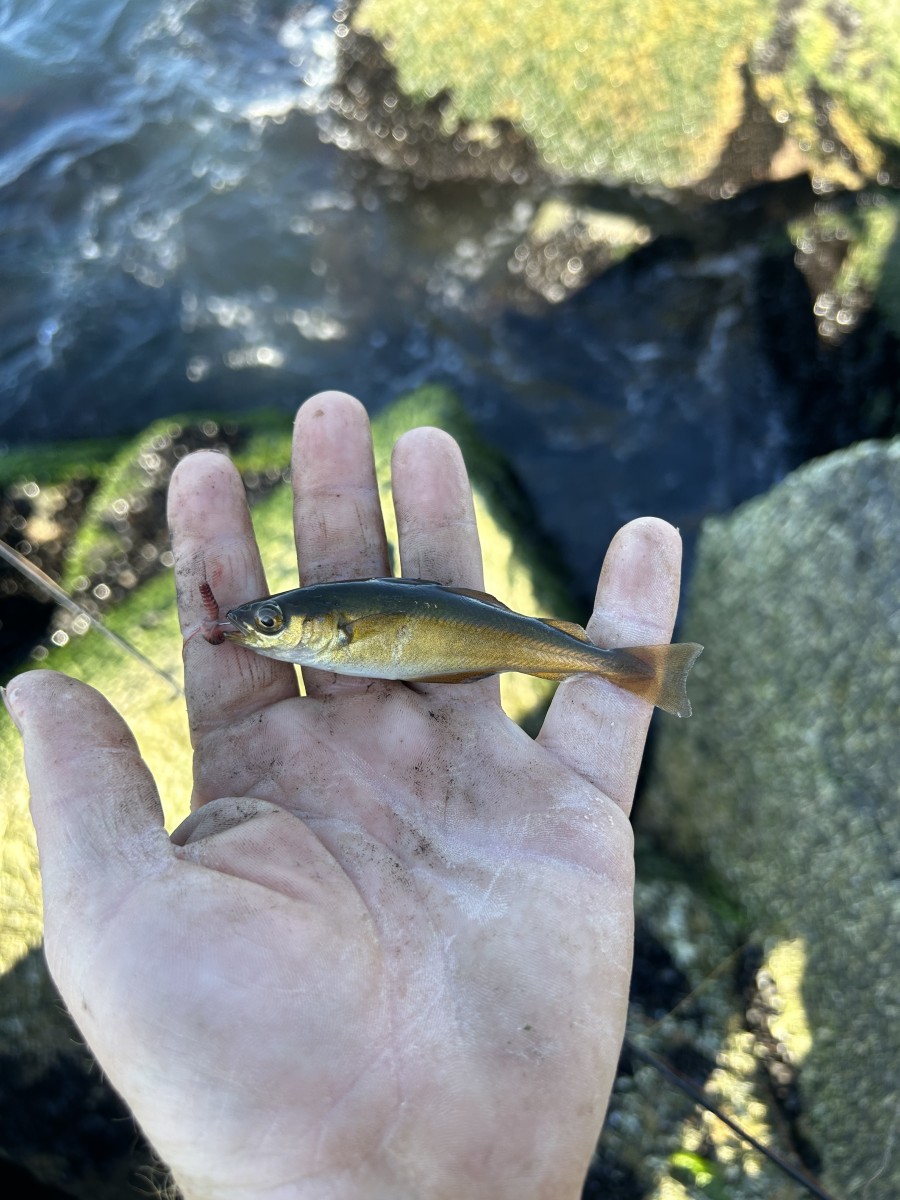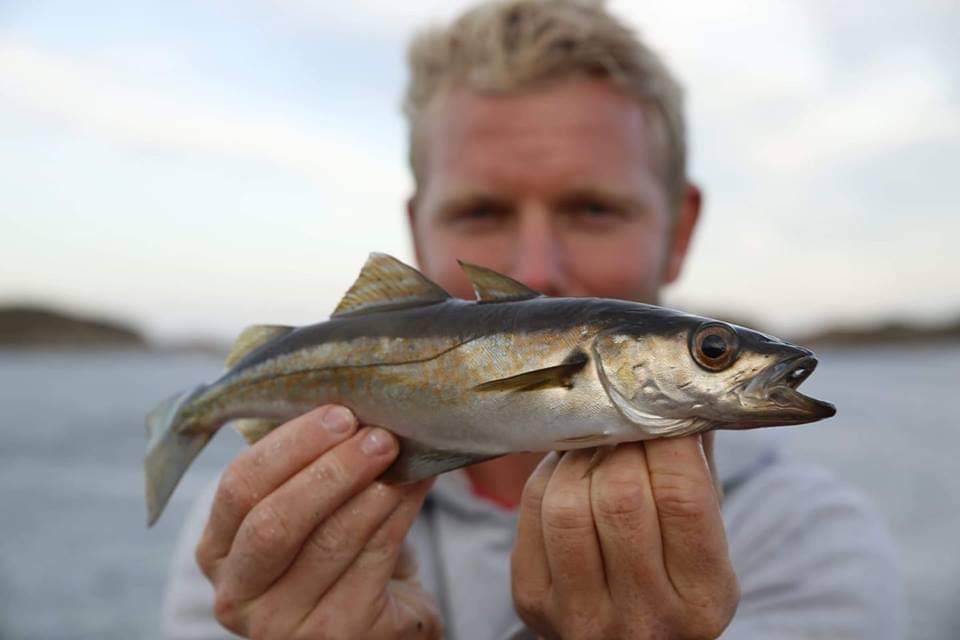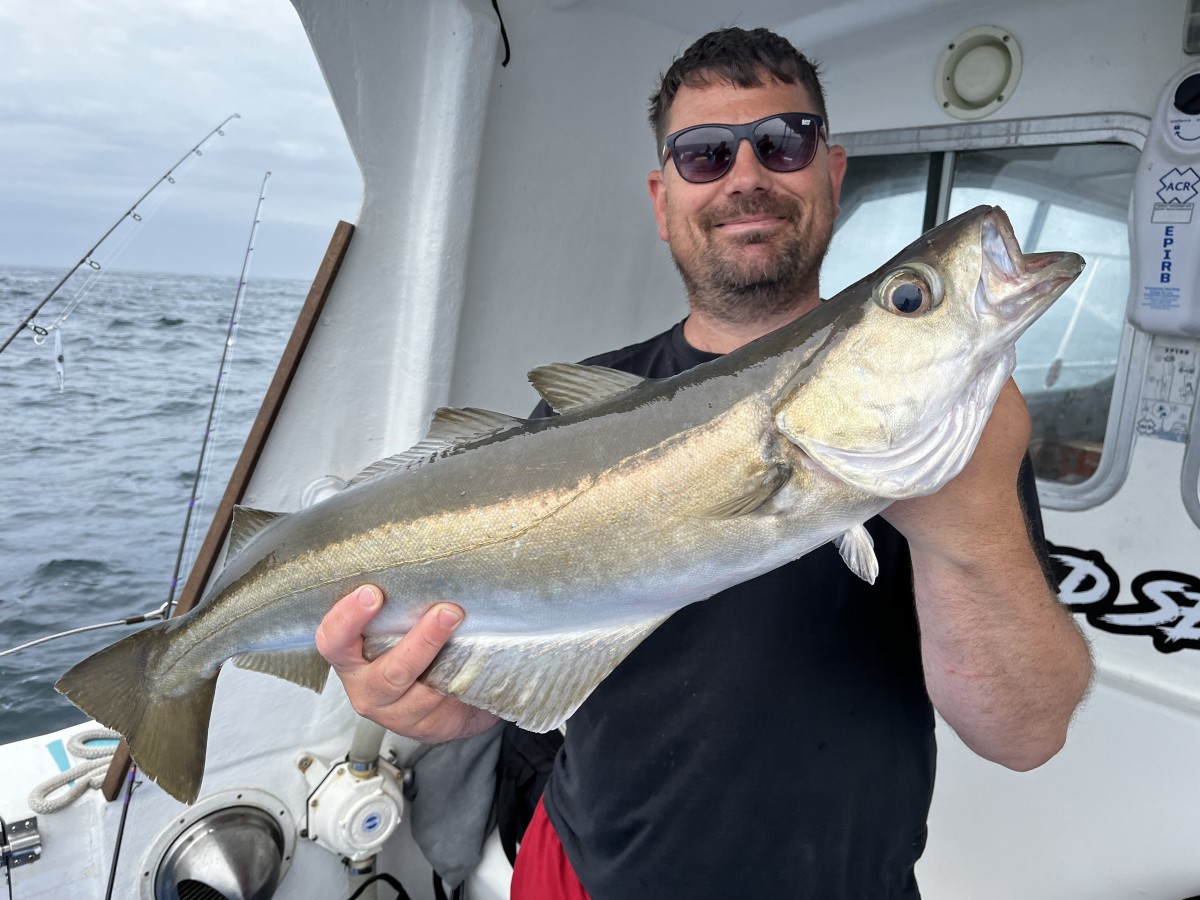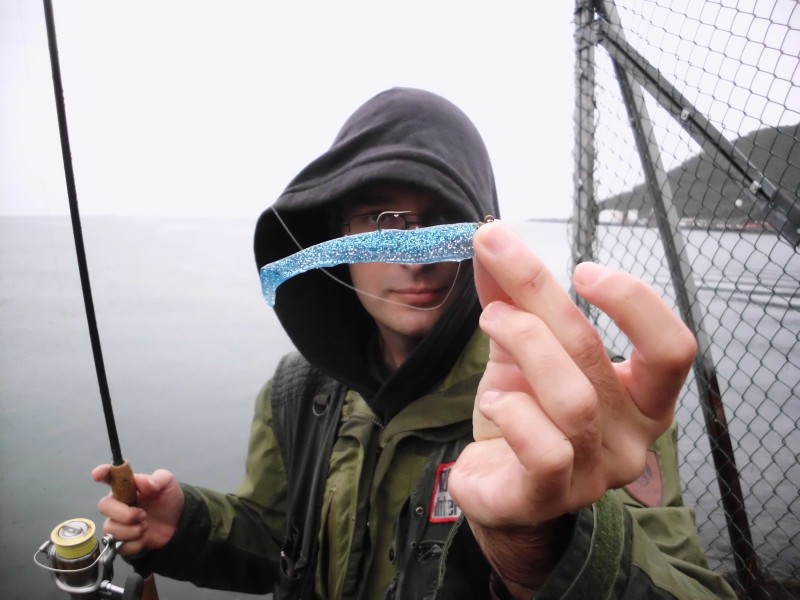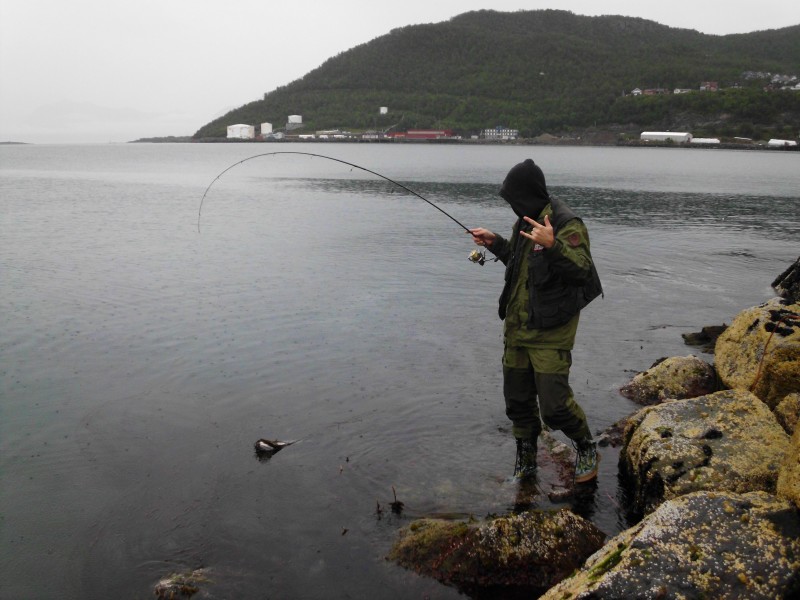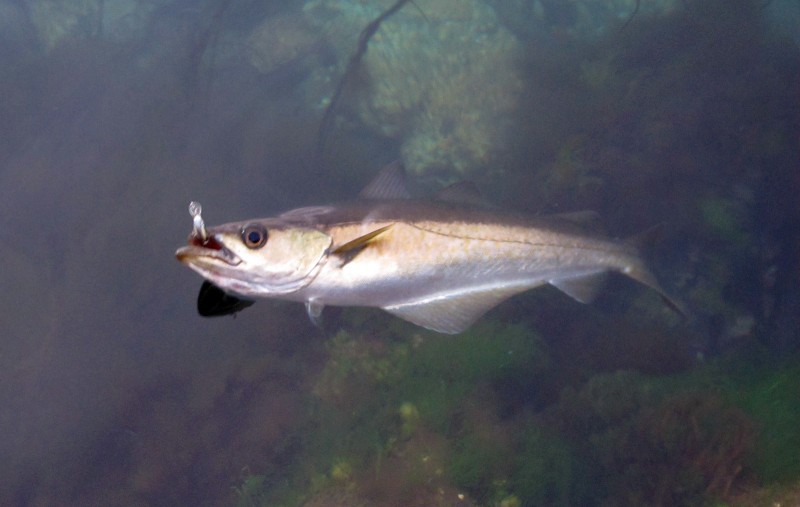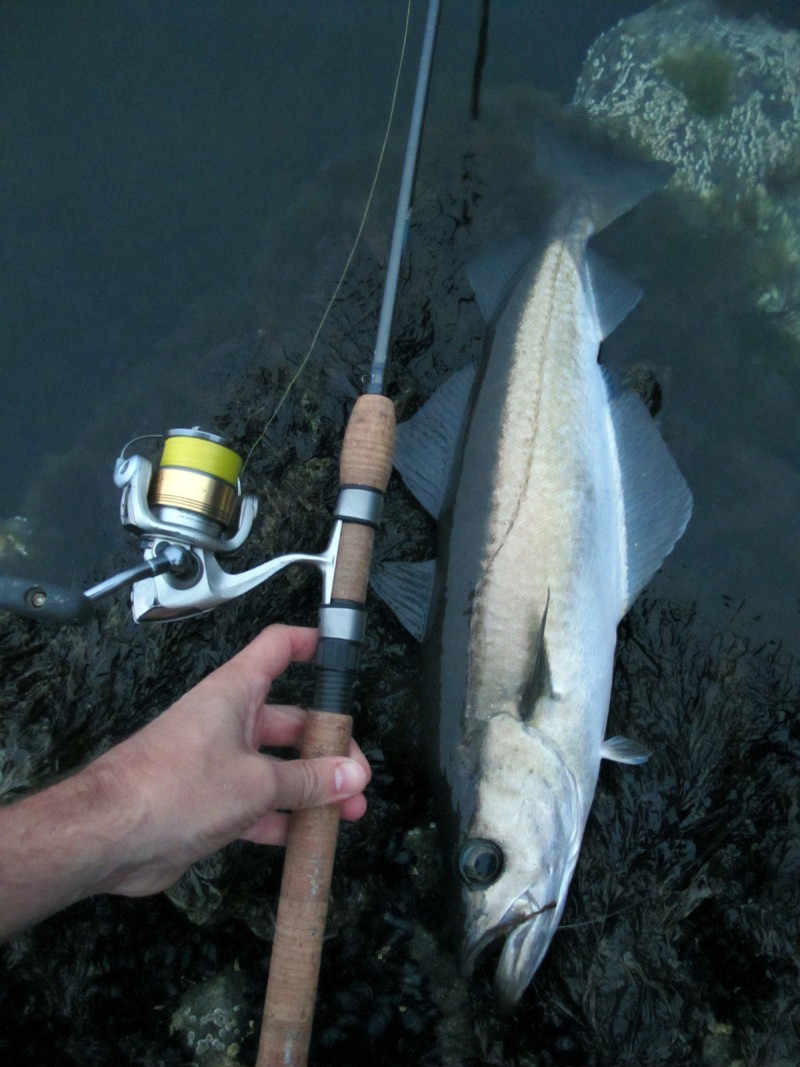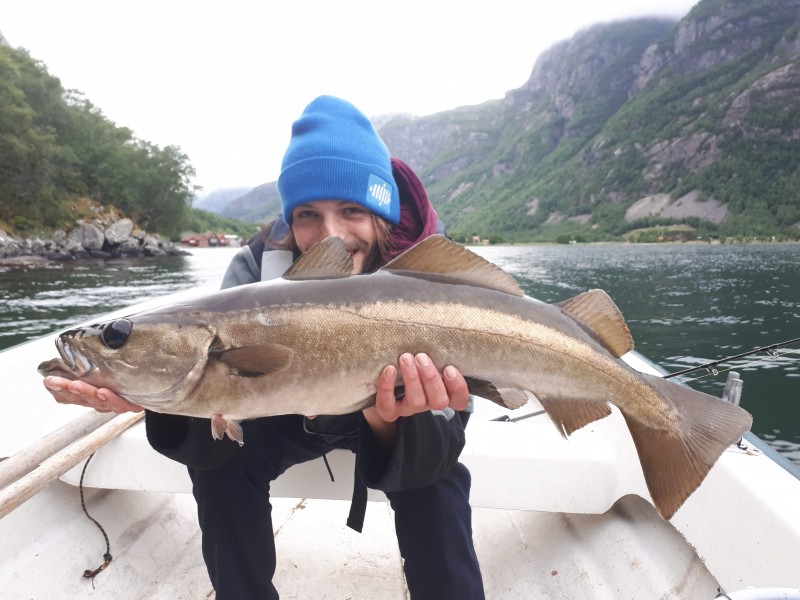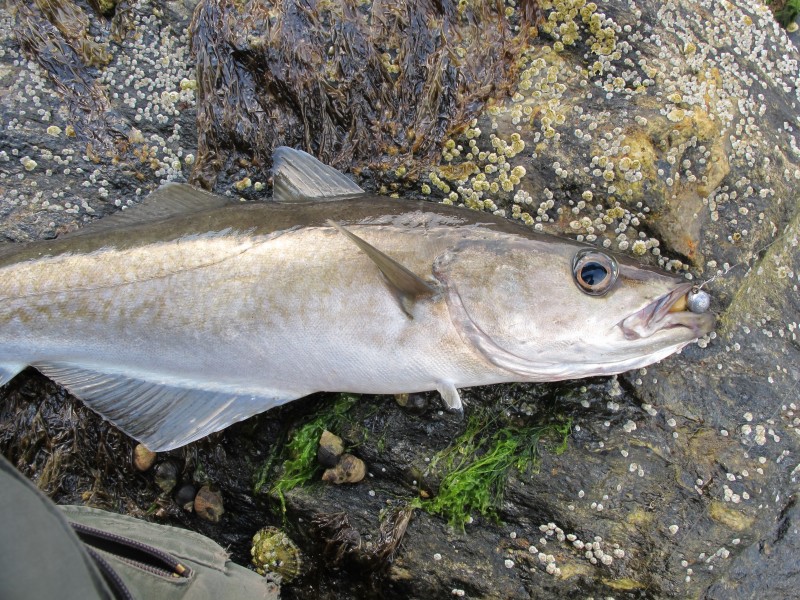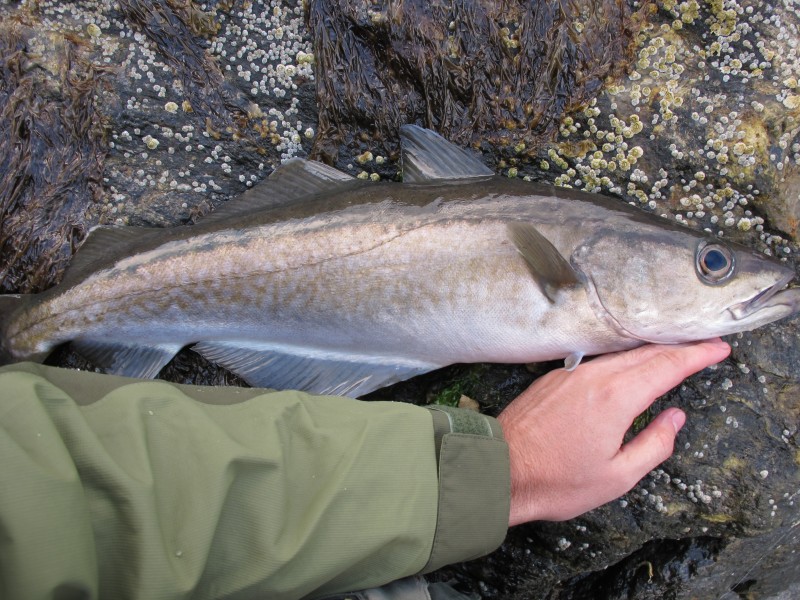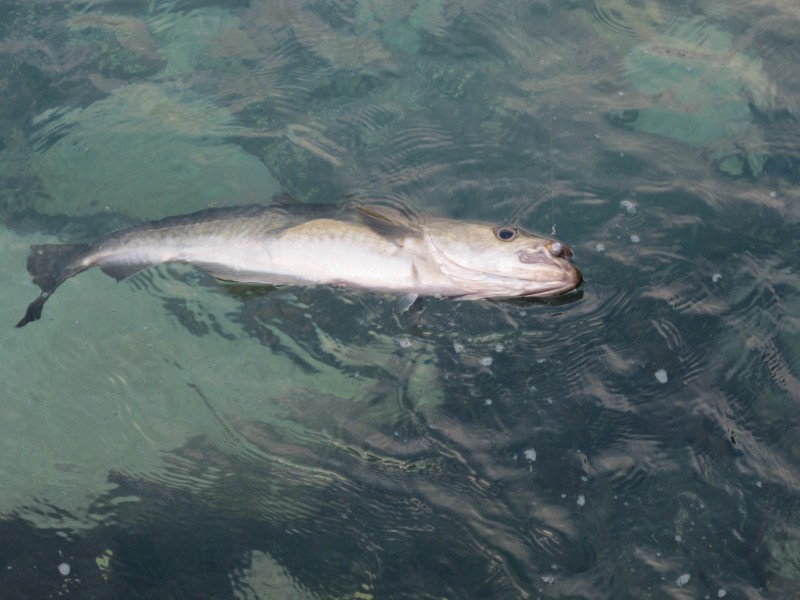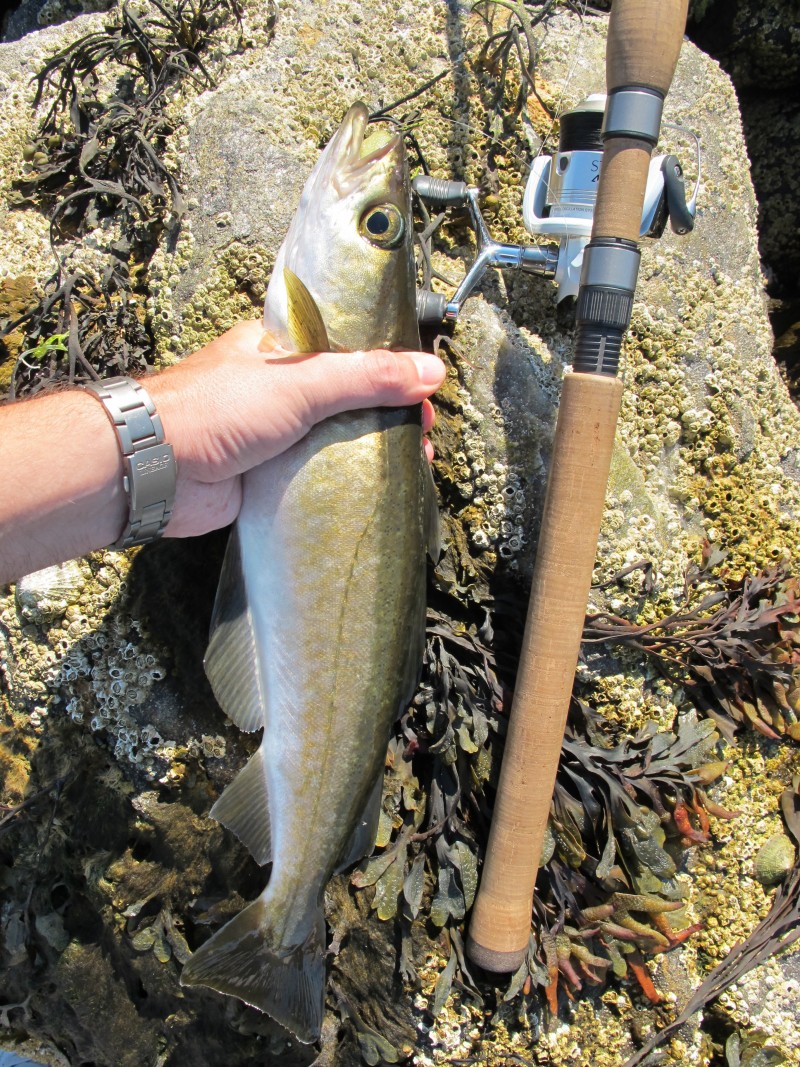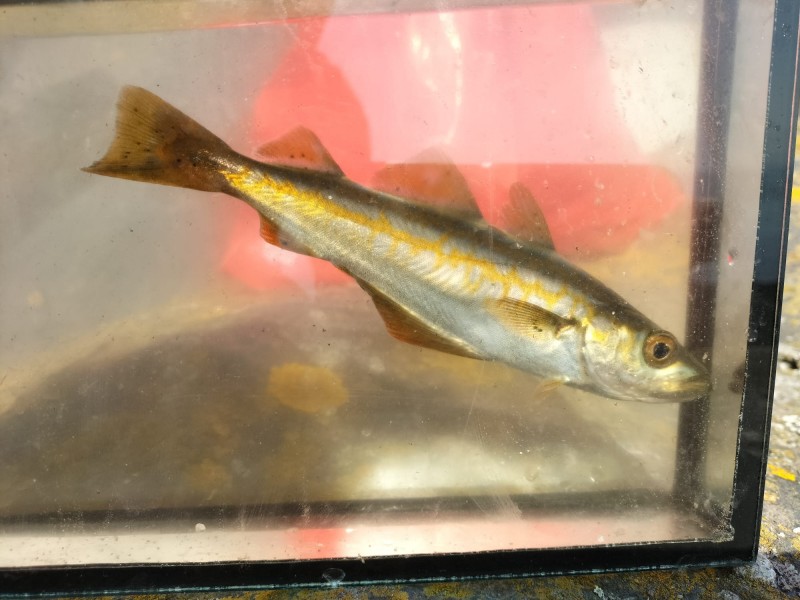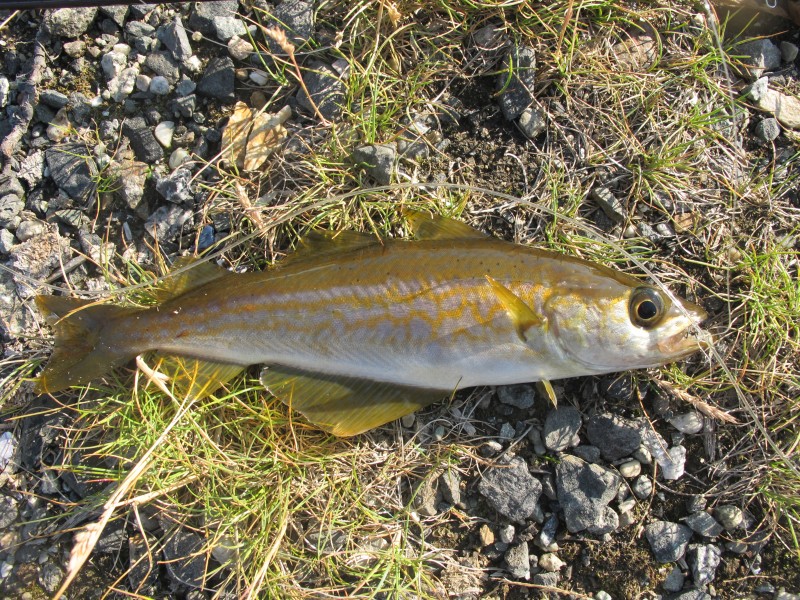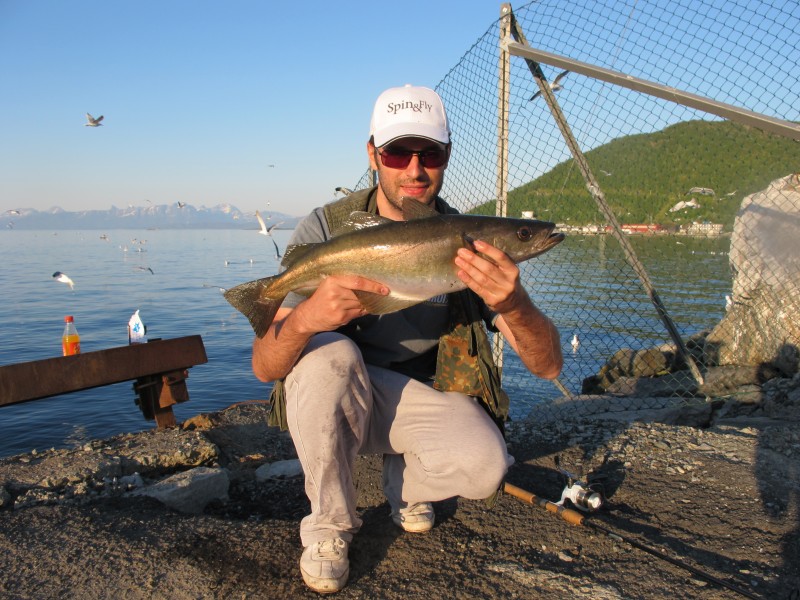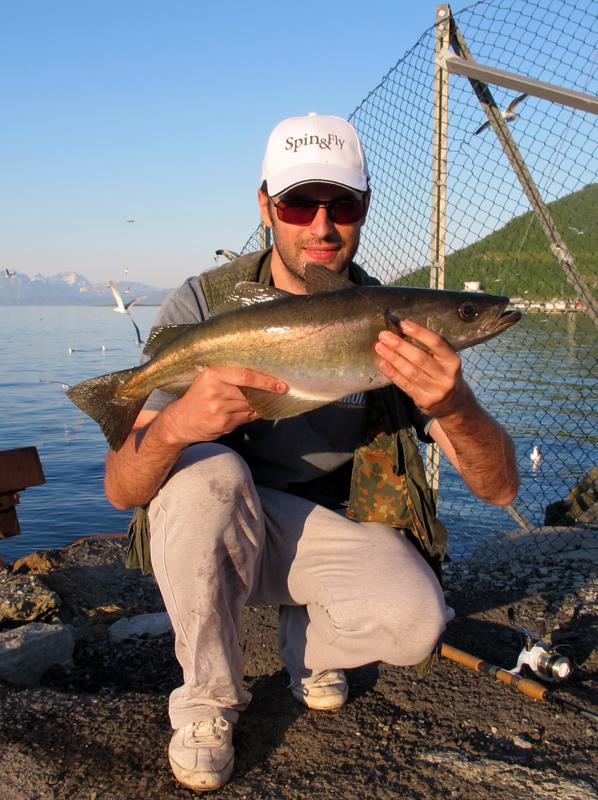Atlantic pollock
(Pollachius pollachius)
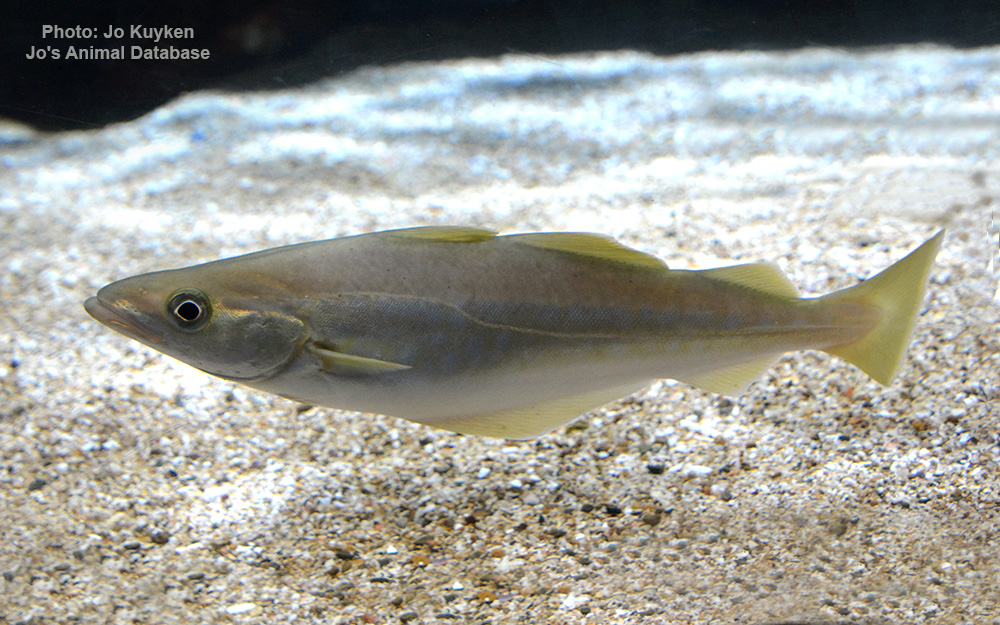
Image source: Jo's Animal Database
Classification
General data
Pollachius pollachius (Atlantic or European pollock) is a species of marine fish in the Pollachius genus. FAO uses the English name pollack for this species. Together with Pollachius virens, it may also be referred to as pollock. Other names include European pollock, lieu jaune, and lythe.
It is common in the north-eastern parts of the Northern Atlantic, including the Bay of Biscay and North Sea.
Adults can grow up to 130 cm (51 in) and weigh up to 12.41 kg (27.4 lb), although more commonly their maximum length is 75 cm (30 in).
Lower jaw distinctly projecting beyond upper ones. Lacks a chin barbel. Dark lateral line that sharply curves over the pectoral fin and continues over the whole body. No dark spot at pectoral fin base. Dorsal and anal fin interspaces are short. Sensory canals with large pores on the head. Body-color is variable; dark dorsally, sharply distinguished from silver-gray sides and belly; the upper part of the body with yellow to orange streaks or blotches; the lateral line greenish. The fins are uniformly dark except for the pelvic fins which are yellowish.
Found in inshore waters but also down to 200 m depth, in areas with hard bottoms. Juveniles are pelagic, spending 2-3 years near the coast including rocky areas, kelp beds, sandy shores, and estuaries. Juveniles may form schools with saithe (Pollachius virens), and have also been found solitary and defending their feeding territory.
Larger individuals move to the open sea and are often found around rocky areas at 40-100 m depth. Also observed around shipwrecks and oil platforms. Adults occur singly or in small dispersed shoals but are known to form dense shoals on spawning grounds.
